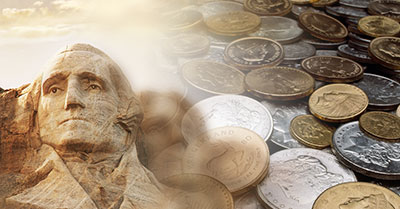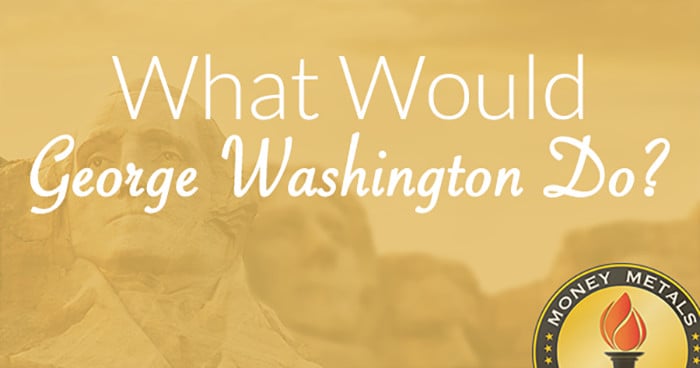 Even though it is still early in the 2016 election season, it’s not hard to imagine why many voters are already sick of hearing from politicians. The empty promises, the lies, the attacks, and the counter-attacks don’t accomplish anything for the American people. Meanwhile, the national debt keeps growing unsustainably with no realistic plans being put on the table to shrink it down.
Even though it is still early in the 2016 election season, it’s not hard to imagine why many voters are already sick of hearing from politicians. The empty promises, the lies, the attacks, and the counter-attacks don’t accomplish anything for the American people. Meanwhile, the national debt keeps growing unsustainably with no realistic plans being put on the table to shrink it down.
On Washington’s Birthday – or as it is now known in these politically correct times, “President’s Day” – it’s worth reflecting on what our first President would do to put the country’s financial house back in order. One of the first things he’d surely do is end the reign of fiat money.
In a 1787 letter to Jabez Bowen, Washington wrote:
“If in the pursuit of the means we should, unfortunately, stumble again on unfunded paper money or any similar species of fraud, we shall assuredly give a fatal stab to our national credit in its infancy. Paper money will invariably operate in the body of politics as spirit liquors on the human body.”
The Founding Fathers understood the dangers of fiat money and central banking far better than most politicians do today. Today’s U.S. Federal Reserve Note dollars are an abomination that has no basis in the U.S. Constitution.
The Coinage Act of 1792 defined a dollar in terms of silver. A dollar was specifically worth 371.25 “grains” of silver (equal to about three-fourths of an ounce).
Silver Played a Role in Defining and Backing the Currency Until 1965
That’s when the U.S. Mint ceased producing 90% silver dollars, half dollars, quarters, and dimes. Of course, investors can still buy U.S. 90% silver coins minted in 1964 and earlier. They are priced based on the current value of their silver content, plus a small premium. The gap between the silver value of the coins and their face value represents the depreciation in the purchasing power of the dollar since they were minted.
 The last real link the U.S. still had to sound, Constitutional money was finally broken in 1971 when President Richard Nixon suspended gold convertibility. From then on, no foreign government could redeem their dollar reserves for gold. And the dollar, now a purely fiat currency, began losing value at a more rapid pace.
The last real link the U.S. still had to sound, Constitutional money was finally broken in 1971 when President Richard Nixon suspended gold convertibility. From then on, no foreign government could redeem their dollar reserves for gold. And the dollar, now a purely fiat currency, began losing value at a more rapid pace.
At the same time, government debt growth began accelerating. In 1971, the national debt stood at $398 billion, 34% of GDP.
Today, the government owes a staggering $19 trillion, representing 99% of GDP. That’s just what’s on the books officially. The $19 trillion national debt doesn’t account for tens of trillions more in unfunded liabilities.
George Washington warned that unbacked paper money will “ruin commerce, oppress the honest, and open the door to every species of fraud and injustice.” How right he was.

About the Author:
Stefan Gleason is CEO of Money Metals Exchange, the company recently named "Best Overall Online Precious Metals Dealer" by Investopedia. A graduate of the University of Florida, Gleason is a seasoned business leader, investor, political strategist, and grassroots activist. Gleason has frequently appeared on national television networks such as CNN, FoxNews, and CNBC and in hundreds of publications such as the Wall Street Journal, TheStreet, and Seeking Alpha.





